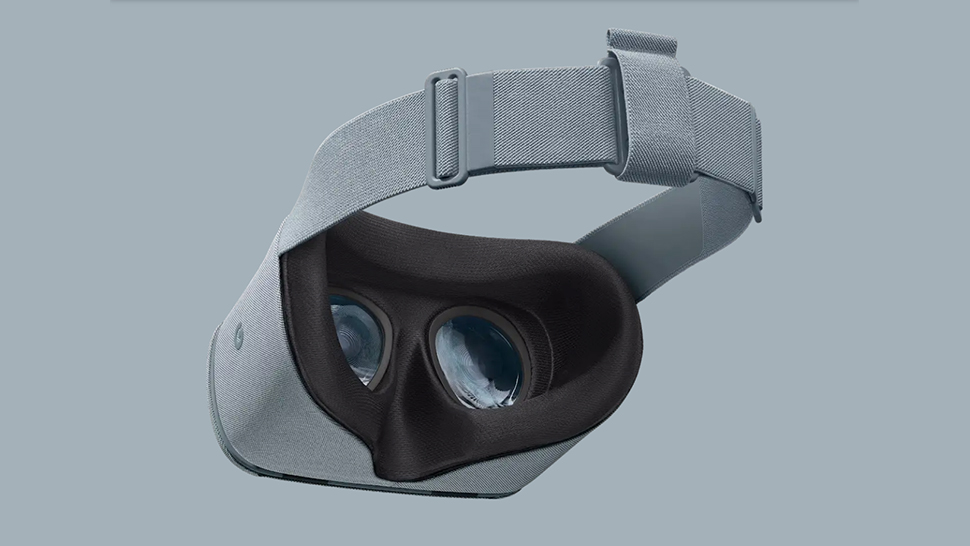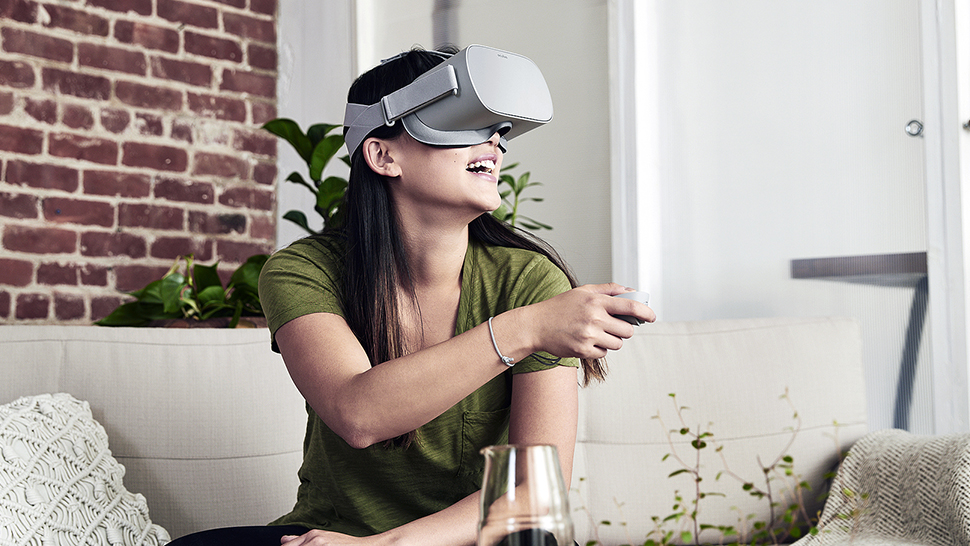Oculus Go vs Daydream View: which is the best choice for low-cost VR?
Virtual reality on a budget, from Facebook and Google


You don't have to spend big on an Oculus Rift or an HTC Vive to get into virtual reality these days – plenty of lower-priced headsets are trickling on to the market, even if they can't provide quite as much immersion and graphical oomph as those at the top of the tree.
Here we're going to take you through the pros and cons of two of the best budget VR headsets you can buy today: the Oculus Go, from Facebook, and the Daydream View, from Google. Wondering which is the best buy for you? We've got all the answers you need.
Note that here we're referring to the second-generation Daydream View, the one launched in 2017 and currently sold by Google.
- Here are our picks for the best VR headsets you can buy
- Check out the top games for playing in virtual reality
Oculus Go vs Daydream View: design

The Oculus Go
Lightweight, easy on the eye... both the Oculus Go and the Daydream View have the same sort of basic style to them, though the Oculus opts for a bit more plastic and a lighter shade of grey. You'll look a bit of a fool wearing either of them, but that's VR for you.
There is one crucial difference here, which is reflected in the prices: the Oculus Go fits in everything you need to experience mobile VR, including a screen, a processor, some internal storage and so on. You get everything you need in the box.
The Daydream View, on the other hand, needs a smartphone slotted into it to work – you need a phone from this list, like the Pixel 2 or the Samsung Galaxy S8, to provide the display and all the processing power. As a result, the Daydream View does look slightly less solidly built than the Oculus Go.
Assuming you've slotted your phone of choice into the Daydream View, they're very similar – both give you wireless, self-contained virtual reality experiences, and you don't need to connect up any other kit. Both come with a basic controller as well, for pointing and selecting (or firing and smashing, depending on the game).
Get all the latest news, reviews, deals and buying guides on gorgeous tech, home and active products from the T3 experts
Oculus Go vs Daydream View: specs

The Daydream View
If you're wondering why anyone would pay a lot more for a full VR headset, the answer is the quality of the graphics and the games – it's like the difference between a game running on your desktop computer and a game running on your smartphone. The specs inside these mobile VR headsets can't compete.
Facebook has been a little coy about the specs inside the Oculus Go, but we know it's powered by a Snapdragon 821 mobile chip, and a 5.5-inch, 2560 x 1440 pixel display across both eyes, resulting in a sharpness of 538 pixels-per-inch. You can pick up the device with 32GB or 64GB of storage, depending on how much you want to spend. There's also built-in audio so you don't have to use headphones.
How that compares to the Daydream View depends on the phone you put into it. The Pixel 2 XL, for example, has a Snapdragon 835 processor and up to 128GB of storage, beating the Oculus Go on both counts. It also has a 6-inch, 2880 x 1440 pixel display running at the same 538 ppi as the Oculus Go. The Daydream View relies on the audio from your phone too, whether you want to use its speakers or headphone port.
It's hard to compare specs considering the ones for the Daydream View can vary. In general, you're going to get more powerful components by slotting in your own phone, but the optimisations the Oculus Go can make with its all-in-one design are going to balance that out to some extent.
Oculus Go vs Daydream View: features

The Oculus Go
We've already mentioned a few of the key features above, but we haven't quite covered everything. Battery life, for example: in testing, the Oculus Go gives you about two hours of gaming between charges, and we'd expect the same from whatever phone you put in the Daydream View (your phone no doubt lasts longer than two hours normally, but VR gaming will hammer the battery hard).
You need special apps in both cases, from either Google or Oculus, to load games and apps on the headsets. The Oculus Go has a better selection of titles to pick from, perhaps unsurprisingly given its VR heritage, though the quality can vary significantly. Some games, like the excellent Wonderglade, are available on both platforms.
Both the Oculus Go and the Daydream View can track your head as it moves but not your whole body – in other words, they can tell which way you're looking, and when you turn around, but not when you take a step forwards. For full motion tracking, you're going to have to upgrade to one of the top-end VR headsets out there.
Oculus, being a dedicated VR company, seems more interested in developing new apps and games than Google does right now, so if you're looking for the very best titles and the best access to new releases, the Oculus Go headset is probably the one to go for. If you pick up the Daydream View though, there's still plenty of content to enjoy.
Oculus Go vs Daydream View: verdict

The Daydream View
Stick a phone inside the Daydream View and these two mobile VR headsets are actually very well matched. Having said that, choosing between them isn't difficult at all, because of the inherent differences between them – the fact that the Oculus Go is an all-in-one, self-contained device, and the Daydream View isn't.
If you've already got one of the phones that the Daydream View supports, then Google's headset is a cheap and fun way to get into virtual reality. You can play games, watch 360-degree videos, and so on – and it's around half the price of the Oculus Go (though you will of course have shelled out for the phone in advance).
If you don't have a phone that works with the Daydream View – an iPhone X, for example – then the Oculus Go becomes the obvious choice. You get all the expertise that Oculus and Facebook have built up down the years, in both the software and the hardware, and everything works right out of the box.
It's also worth bearing in mind that the Daydream View is the older device and might get a refresh from Google later this year – or maybe just support for newer phones like the Pixel 3. As mobile handsets get more and more powerful, the kind of experiences you can expect even from low-level VR hardware will continue to improve.
Dave has over 20 years' experience in the tech journalism industry, covering hardware and software across mobile, computing, smart home, home entertainment, wearables, gaming and the web – you can find his writing online, in print, and even in the occasional scientific paper, across major tech titles like T3, TechRadar, Gizmodo and Wired. Outside of work, he enjoys long walks in the countryside, skiing down mountains, watching football matches (as long as his team is winning) and keeping up with the latest movies.
